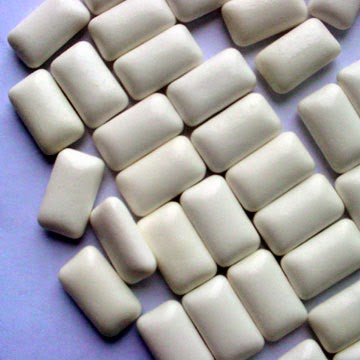By Erin Bittman
Explore bubble-gum blowing by tying it in with academic subject areas!
Graphing
Create a graph that shows how many students can blow bubbles vs. how many students cannot. Students who know how to blow bubbles can write a how-to to help peers learn the skill of bubble making. Students who have difficulty can write about how they think a bubble is made.
Geometry/3-D Solids
Students examine the shape of the gum out of the wrapper (cylinder or rectangular prism, depending on the brand). They compare the shape of the gum pre-chewed to making a bubble (sphere).
Measuring
Instruct students to measure the length of the gum before and after being chewed. Have kids stretch their chewed gum out as far as they can and lay it on a piece of wax paper (make sure they have clean hands!). How long can they stretch it? Then, have each student blow a bubble and measure the diameter of it. Once they find the diameter, have them figure out the circumference of their bubbles.
Mean, Median, Mode and Range
List the students' circumference measurements on the board and have them figure out the mean, median, mode and range using the numbers listed.
States of Matter
solid - gum out of wrapper
liquid - saliva when chewed
gas - blowing a bubble
solid - chewed gum
Ask kids if they think the gum underwent a physical or chemical change.
(Answer: There was a physical change. Nothing new was created. Matter wasn't destroyed.)
Next, have them write about how their gum physically changed (density, color and temperature).
What made the gum get soft? Was it the saliva? Have kids place their chewed gum in ice water (or take a drink of ice water). They will notice that the gum will get hard. Does temperature play a role?
Mass
Predict: Will unchewed, chewed and chewed gum exposed to water have the same mass?
Lay the gum on a square of wax paper and compare it to a piece of unchewed gum. Then, weigh the gum that has been chewed and exposed to cold water. Did they all weigh the same?
Figurative Language
Have students describe bubble gum by using a simile or a metaphor.
Writing
Have kids invent a new flavor of gum! Then, have them write a recipe for their bubble gum. What will they call their gum?
Design
Have students design a three-dimensional shape for the gum. Can they figure out the volume? Have the students design a logo and packaging. What is the area and perimeter of their gum's wrapper? How many pieces of gum does their main packaging hold? Where can you buy it?
Economics
How much will their bubble gum cost? Have the students create math problems, using the cost of their gum, to figure out how much money they would make depending on how many packs are sold.
History - Extra Credit
Students who research who invented gum and the art of bubble making get extra credit points!
Thank you Erin! {}
Erin Bittman is a student at the University of Cincinnati. She will be a student teacher in a multi-grade classroom in the fall (second and third grades). Check out her blog E Is for Explore!

